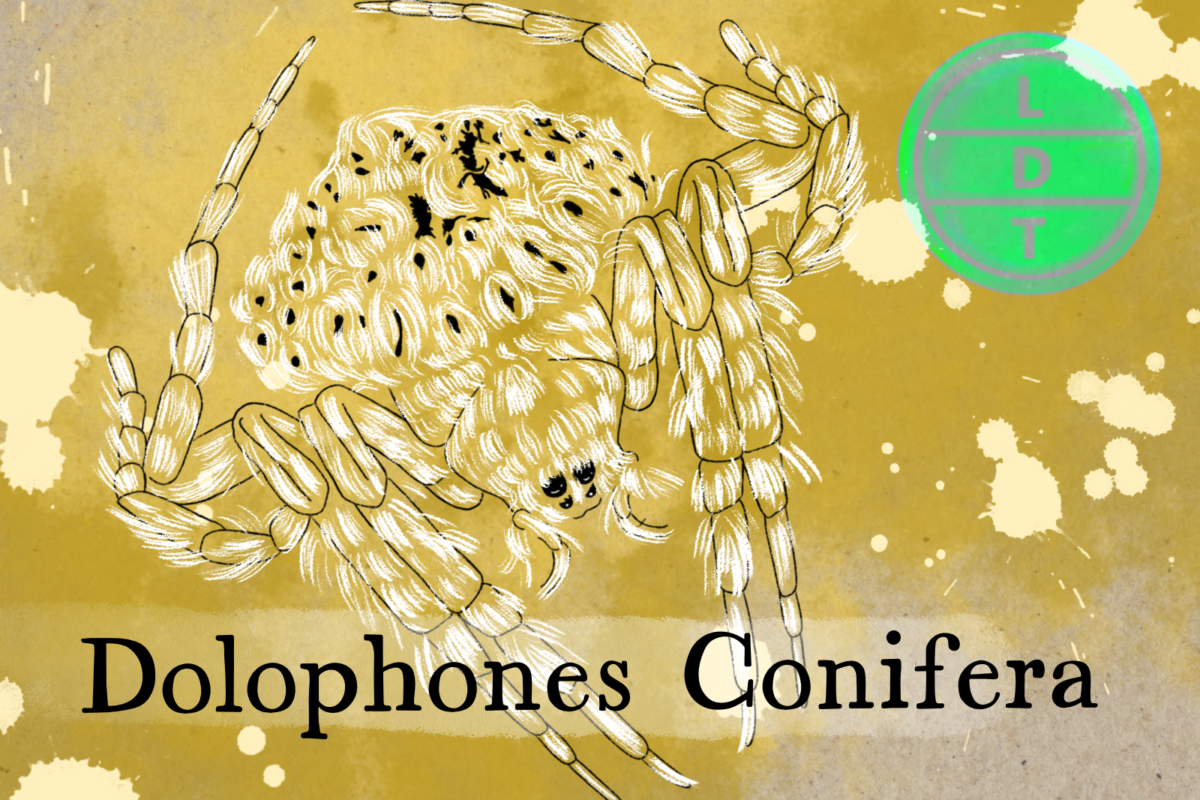“…and today we’re talking about a flat character in the animal kingdom, but more on that later.”
There are hundreds of species of spiders that call Australia home. Some small, some big, some deadly, and some…hidden. But one master of disguise tends to order a side of contortion with its camoflauge entre. Taking the term tree hugger a bit too literally, the wrap-around spider keeps out of sight from both predator and prey by getting close and personal with the local flora. But hiding in plain sight is how this spider survives here in Life, Death, and Taxonomy.
Description of the Wrap-Around Spider
- Brown, black, and gray, with some spots of red.
- Large broad abdomen, almost like a crab.
- Long hairy legs, similar to a tarantula.
Measure Up
Welcome to the beloved Measure Up segment. The official listener’s favorite part of the show! The part of the show when we present the animal’s size and dimension in relatable terms through a quiz that’s fun for the whole family. It’s also the part of the show that’s introduced by you when you send in audio of yourself saying, singing, or chittering the words Measure Up into ldtaxonomy at gmail dot com. We do have a new Measure Up intro from Nora!
Female Length
- 9mm (0.35 inches)
- How many wrap-around spiders go into the length of Australia’s largest predator?
- Hint: The Dingo is the largest predator in Australia. Dingoes are more flexible than dogs and have a wider range of motion in their hips and wrists, which helps in moving around burrows.
- 171 spiders. The dingo is about 5 feet long.
Male Length
- 5-6 mm (0.19 to 0.23 inches)
- Kiritimati, Kiribati is one of the first countries to experience the new year and it is 389,250,783 spiders from this island, which is among the last places to experience the new year.
- Hint: Even though this pacific island territory is southwest of Kiribati, it is on the opposite, eastern side of the International Date Line and experiences the new year almost a full 24 hours after Kiribati. This is because the IDL isn’t a straight line. Instead, it snakes around the east side of Kiribati and then back to the west side of this island.
- Kiribati is 1,413 miles (2,274 km) away from American Samoa.
Fast Facts about the Wrap-Around Spider
Range
- Native to Western Australia and there are 17 other members of the genus that live all over Oceania.
- They prefer forests and spend time in their webs and on trees.
Behavior
- Wrap-arounds are more active at night.
- They build their webs at night to catch prey, but tear it down during the day and recycle it.
- As with many orb-weavers, they have venom that isn’t particularly dangerous to humans. Though their bite can be painful.
- As orb weavers, their webs are circular in shape and pattern. They are used primarily to catch prey. Orb webs are constructed with a nonsticky framework and spirals with sticky liquid droplets are added to the framework.
Major Fact: Wraps Around
While many insects are known for their camouflage, spiders don’t usually hold any academy awards for best disguise (at least in comparison to the leaf bug, stick bug, or thorn bug. Some make themselves look like flowers, and there are some great entries, but most spiders that rely on camo tend to have a coloration that aids in pattern disruption, rather than anything in their behavior or body shape.
There’s also the trap door spider that looks like an oreo…to catch a stray dog, a sweaty 13-year-old, really just anyone who would be willing to eat what they think is an oreo off an Australian forest floor.
The wrap-around spider takes things to a new level when it comes to staying hidden
Good camouflage starts with your choice of stage…your location.
The wrap-around spider tends to choose small tree branches.
The second step for great camo is coloration. It’s brown and mottled, just like the chosen stage.
Step three is the texture… most spiders don’t get this far. One giant leap for spider-kind. The wrap-around spider has these craters all over its body that also tend to match the pitted surface average tree branch. They actually kinda look like little eyes.
But most animals don’t even get to step 4… body shape. The wrap-around spider has a very wide and flat body with a concave underside to perfectly match the tree branches.
Ending: So stay still, follow all 4 steps to a better and more hidden you, and give a tree a big spider cuddle like the wrap-around spider here in LDT.

